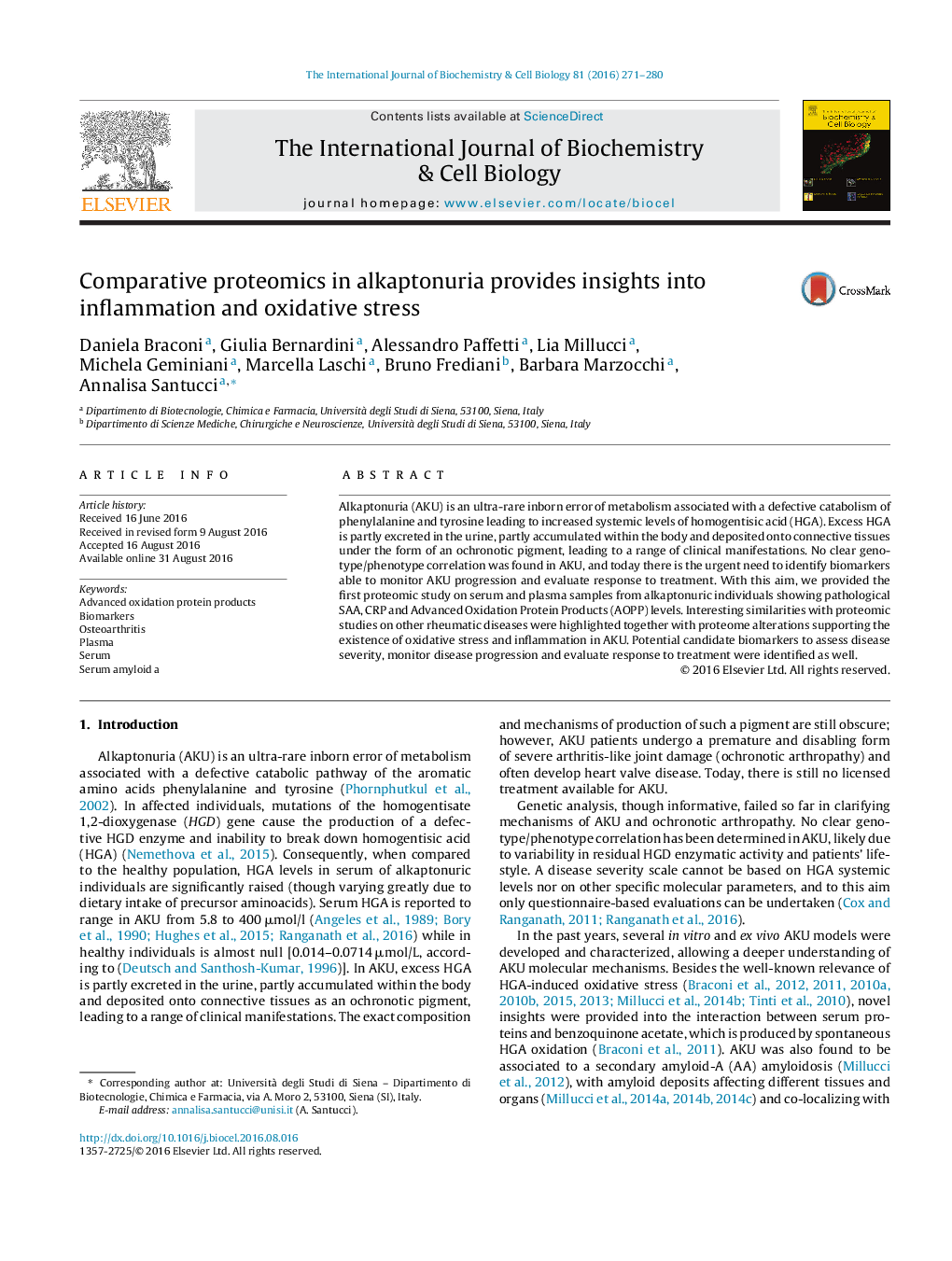| Article ID | Journal | Published Year | Pages | File Type |
|---|---|---|---|---|
| 5511475 | The International Journal of Biochemistry & Cell Biology | 2016 | 10 Pages |
â¢We provided the first proteomic analysis of serum and plasma from alkaptonuria (AKU).â¢We found proteome alterations in AKU suggesting inflammation and oxidative stress.â¢We identified potential biomarkers to assess severity and progression of AKU.â¢We identified potential biomarkers to evaluate response to treatment in AKU.
Alkaptonuria (AKU) is an ultra-rare inborn error of metabolism associated with a defective catabolism of phenylalanine and tyrosine leading to increased systemic levels of homogentisic acid (HGA). Excess HGA is partly excreted in the urine, partly accumulated within the body and deposited onto connective tissues under the form of an ochronotic pigment, leading to a range of clinical manifestations. No clear genotype/phenotype correlation was found in AKU, and today there is the urgent need to identify biomarkers able to monitor AKU progression and evaluate response to treatment. With this aim, we provided the first proteomic study on serum and plasma samples from alkaptonuric individuals showing pathological SAA, CRP and Advanced Oxidation Protein Products (AOPP) levels. Interesting similarities with proteomic studies on other rheumatic diseases were highlighted together with proteome alterations supporting the existence of oxidative stress and inflammation in AKU. Potential candidate biomarkers to assess disease severity, monitor disease progression and evaluate response to treatment were identified as well.
Graphical abstractDownload high-res image (262KB)Download full-size image
